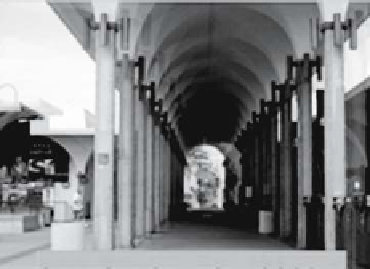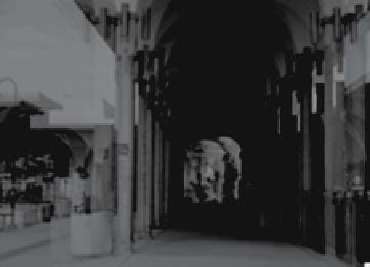Graphics Programs Reference
In-Depth Information
on paper (Figure 3.50c) but has much depth information when seen through the glasses.
Some of the original color information naturally is lost.
An interesting difference between the three anaglyphs of Figure 3.50 is the person
on the left-hand side (he is clearly seen in Figure 3.49) who completely disappears in
thepureversion.
Experienced users recommend creating all three anaglyphs of a given image, trying
the color, gray, and pure versions (in this order), and selecting the one judged best.
There are many sources of software (much of it free) to generate anaglyphs. Those
too lazy to search can check the list at [anabuilder 05].
(a)
(b)
(c)
Figure 3.50: Three Anaglyph Encodings (color version on page 235).
Pick a good-quality anaglyph and examine it carefully. You will notice that each
crucial picture element
P
is shown twice in the anaglyph, in red and blue. The relative
positions of these two color elements is interpreted by the brain as the depth of element
P
. Let's assume that the left-eye view becomes the red parts and the right-eye view
becomes the blue parts. If the red and blue parts of
P
overlap, the brain considers
P
to
be on the image plane (i.e., the paper or screen on which the anaglyph image is printed



Search WWH ::

Custom Search